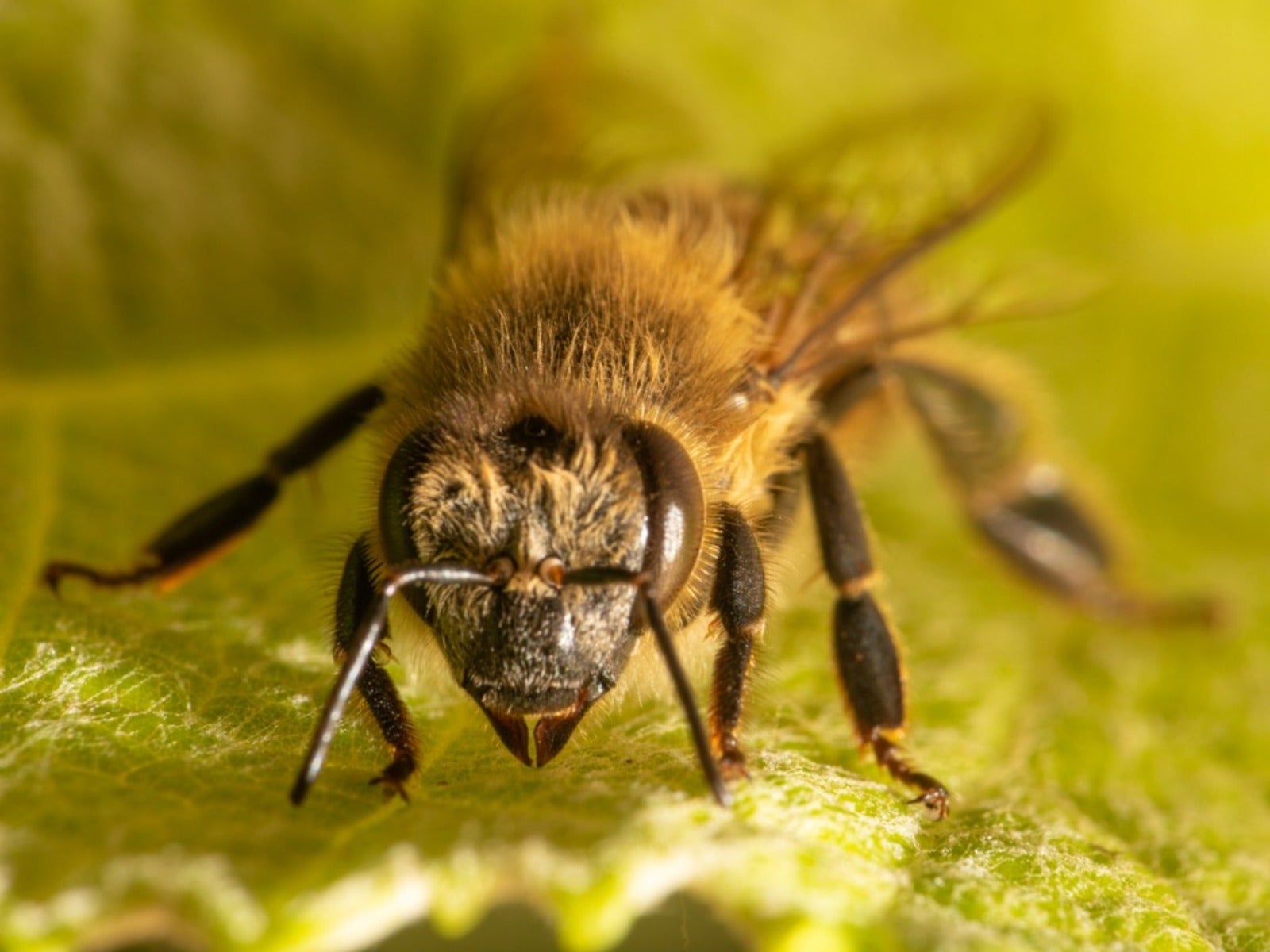How Do Bees See Flowers?


Gardeners often select plants for their landscape that are attractive to bees, the world’s top pollinator. Have you ever stopped to wonder about bee vision though? It’s interesting to think about how a bee sees a flower and what factors make that plant attractive to it.
So how does a bee see? Not exactly like us. Bee vision does not line up with human vision and the differences are fascinating. Read on for more information.
Bees and Their Eyes
The eyes of a bee are large, black, and oval, but what exactly do those eyes see? Do they see better than humans, or not as well?
Bees have compound eyes, just like dragonflies and wasps. Since compound eye resolution is not great, one must conclude that bee vision is not as good as human vision. In fact, it is said that a compound eye would have to be as big as a house to match human eye resolution.
One thing is for certain, each bee has more than twice the number of eyes you might think, five eyes per bee. There are the two big ones, then, positioned between them, the other three in a tiny triangle. These extra eyes are actually ocelli, a single-lens eye. While these ocelli cannot delineate form, they are able to determine light and dark, making them useful for bee flight control.
How Bees See Flowers
So how do bees see flowers? Do they interpret petal colors like we do? Not exactly. A bee can’t see all the colors that humans can see, but they see others that we can’t. For example, honeybees (and, in fact, most insects) see colors like green and blue just fine, but they can’t see red very well. They see purple especially well.
On the other hand, bees can see ultraviolet light, yes, that very light we try to keep off our skin. Flowers have adapted to this by growing ultraviolet patches called nectar guides. Just like those airport lights that help a plane to pull into the right runway, the nectar guides assist bees to land in spots where there is nectar.
Sign up for the Gardening Know How newsletter today and receive a free copy of our e-book "How to Grow Delicious Tomatoes".
Bees have a color spectrum that sees higher frequencies of light. Humans can see the spectrum of violet through red, while bees start and end earlier. They see from ultra-violet to yellow light. They focus not on the color of the petals but on the ultraviolet pigments. What that means is that a monotone flower that looks plain to us might light up like crazy for a bee with ultraviolet colors we can’t see.
How We Know This
If this sounds pretty farfetched to you, you aren’t alone. If you look at the research, you’ll find a long history of experiments scientists have done that involve training bees to respond to specific colors. They offered bees sugar water in a vessel of a particular color, like yellow. The insects didn’t take long to associate the yellow with the food and would return to it time after time even when the food wasn’t there anymore.
These researchers have even studied the actual light photoreceptors in the bees’ eyes. In these experiments involving the bee’s vision, they exposed bees to different wavelengths of light to determine when their photoreceptors send signals to the brain. If there’s no response to a wavelength, they could see that it didn’t register to the photoreceptors.
So next time you're planting flowers for pollinators, remember that it's not just about what flowers look good to us. Keep in mind what bees can see, and what they're likely to find irresistible.

Teo Spengler is a master gardener and a docent at the San Francisco Botanical Garden, where she hosts public tours. She has studied horticulture and written about nature, trees, plants, and gardening for more than two decades, following a career as an attorney and legal writer. Her extended family includes some 30 houseplants and hundreds of outdoor plants, including 250 trees, which are her main passion. Spengler currently splits her life between San Francisco and the French Basque Country, though she was raised in Alaska, giving her experience of gardening in a range of climates.